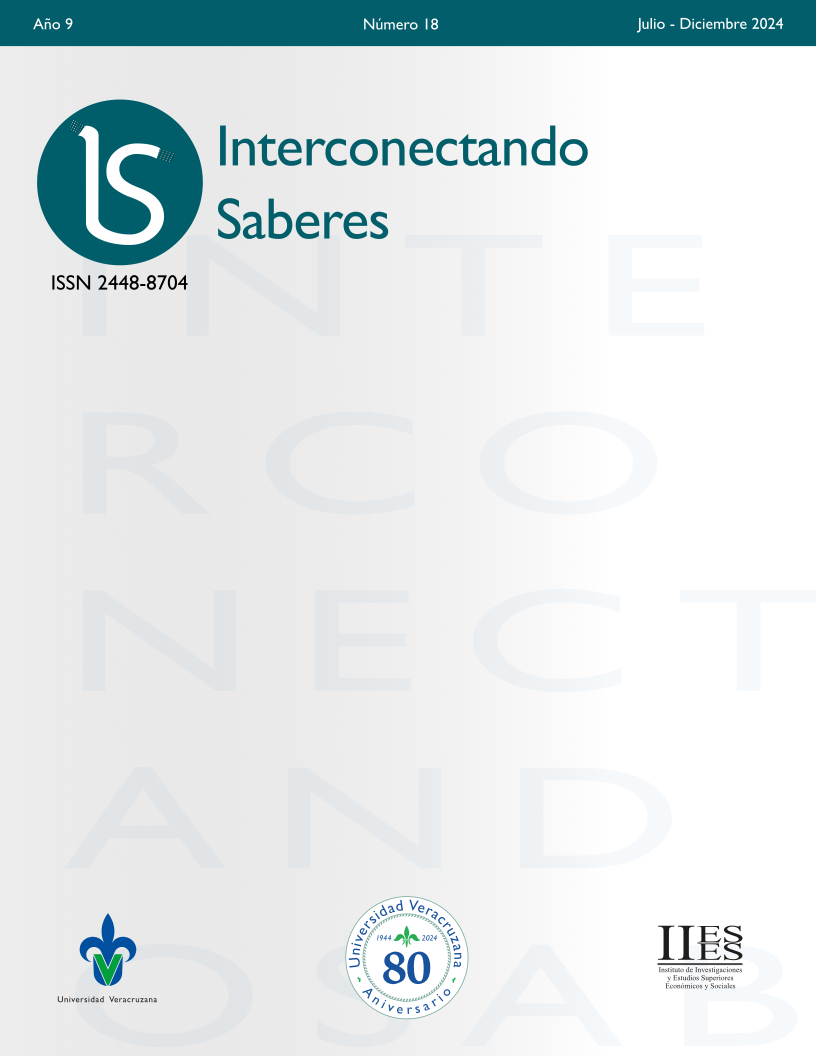Abstract
This study addresses the optimization of vehicular traffic at an intersection in the city of Tuxtepec, Oaxaca, by applying a queueing model (M/M/S) and Monte Carlo simulation. Field observations were conducted to obtain data on vehicle arrival times and traffic light service times. The performance measures of the model were calculated using arrival rates, service rates, and system utilization. Subsequently, the behavior of the traffic flow was simulated under different scenarios, identifying saturation points. The results show that, with constant arrival rates, the system operates stably. However, with maximum arrival rates, certain roads begin to saturate. These findings lay the groundwork for optimizing traffic light synchronization times in later phases of the project.
References
Elbaum, Y., Novoselsky, A., & Kagan, E. (2022). A queueing model for traffic flow control in the road intersection. Mathematics, 10(3997). https://doi.org/10.3390/math10213997
Gandica de Roa, E. (2020). Potencia y robustez en pruebas de normalidad con simulación Montecarlo. Revista Scientific, 5(18), 108-119. https://doi.org/10.29394/Scientific.issn.2542-2987.2020.5.18.5.108-119
Hair, J. F., Hult, G. T. M., Ringle, C. M., Sarstedt, M., Danks, N. P., & Ray, S. (2021). Partial least squares structural equation modeling (PLS-SEM) using R. En Classroom companion: Business. https://doi.org/10.1007/978-3-030-80519-7
Harahap, E., Darmawan, D., Fajar, Y., Ceha, R., & Rachmiatie, A. (2019). Modeling and simulation of queue waiting time at traffic light intersection. Journal of Physics: Conference Series, 1188, 012001. https://doi.org/10.1088/1742-6596/1188/1/012001
Instituto Nacional de Estadística y Geografía (INEGI). (s.f.). Transportes. https://www.inegi.org.mx/temas/transportes
Marcillo, P., Valdivieso Caraguay, Á. L., & Hernández-Álvarez, M. (2022). A systematic literature review of learning-based traffic accident prediction models based on heterogeneous sources. Applied Sciences, 12(9), 4529. https://doi.org/10.3390/app12094529
Mundaca, A. (2024, 20 de enero). Luces en forma de piña, la nueva identidad de los semáforos en Tuxtepec, Oaxaca. Oaxaca. https://oaxaca.eluniversal.com.mx/municipios/luces-en-forma-de-pina-la-nueva-identidad-de-los-semaforos-en-tuxtepec-oaxaca
Murillo Fajardo, J. P. (2022). Desarrollo de un modelo matemático a través de procesos estocásticos para optimizar el tráfico vehicular en la Escuela Superior Politécnica de Chimborazo.
Pereyra, L. C., & Vaira, M. (2021). Diseño de muestreo. Universidad Nacional de Jujuy, 23-32.
Pérez, F., Bautista, A., Salazar, M., & Macias, A. (2014). Analysis of vehicular traffic flow using a macroscopic model. DYNA, 81(184), 36. https://doi.org/10.15446/dyna.v81n184.38650
Reyna, P. (2015). Propuesta de mejora de niveles de servicio en dos intersecciones. Universidad Peruana de Ciencias Aplicadas. https://repositorioacademico.upc.edu.pe/handle/10757/581516
Soto, M. J. (2020). La congestión vial en la Ciudad de México: Retos de la planeación urbana.
Vargas-Sánchez, J. J., Causado, E., & Mercado, H. (2020). Estimadores bayesianos de distribuciones Weibull aplicados a un modelo de líneas de espera G/G/s. Revista de Métodos Cuantitativos para la Economía y la Empresa, 30, 142-162. https://doi.org/10.46661/revmetodoscuanteconempresa.2971
Zhang, S., Guo, Y., Zhao, P., Zheng, C., & Chen, X. (2021). A graph-based temporal attention framework for multi-sensor traffic flow forecasting. IEEE Transactions on Intelligent Transportation Systems, 23(7), 7743-7758. https://doi.org/10.1109/tits.2021.3072118

This work is licensed under a Creative Commons Attribution-NonCommercial-NoDerivatives 4.0 International License.
Copyright (c) 2024 Rodrigo Compañ Sarmiento, Janeth Rodriguez Campechano, Valeria de Jesus Lorenzo Gamboa, Nayeli Sareli Cantero García, Estefany Bichi Delgado


